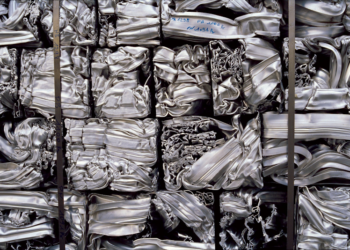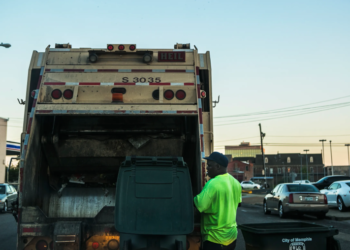Waste Management in Texas
Waste management is a big problem in Texas. But there is also our waste, most of which, like plastic, which is full of chemicals and is not biodegradable. Once thrown away, we find them either in open dumps or buried in landfills in Texas. They then modify the soils on which they are found, and infiltrate the groundwater.
As for incineration, it poses an even more worrying problem. The combustion of waste leads to the formation of clinker, made up of heavy ash and toxic residues from the purification of fumes. Million tons of clinker are thus produced each year, most of which will be reused in public works, to backfill roads, buildings or shopping centres. A revalorization in appearance which actually allows a colossal quantity of heavy metals and pollutants to spread in the soil and groundwater.
And from our homes like in Grapevine, soil pollution continues indirectly. For example, there is our biological waste and the chemicals that we use and discharge with wastewater. Most of this water will end up in the ground, and run off to groundwater.
We can also mention radioactive waste rich in heavy metals such as uranium, radium and plutonium. Present in the ground or in storage sites, their fumes can enter the body through contact, ingestion or inhalation with catastrophic consequences for the health of humans and animals.
Accidental oil spills
Oil leaks can occur in Texas during the storage and transportation of chemicals. One thinks in particular of the daily spills of gasoline, in service stations.
Acid rains
Acid rain is caused by pollutants present in the air which, by mixing with the rain, fall back to the ground. The polluted water can then dissolve some of the essential nutrients present in the soil and change its structure.
The memory of wars
And finally, it is almost hard to believe but it is estimated that around 110 million mines and unexploded explosives are scattered all over the place, on all continents. Remnants of the various wars that lie dormant in the forests, in the lakes or in the fields, and which let their toxic components seep into the ground over time.
Faced with all these voluntary or involuntary aggressions, the soil becomes fragile. The fertile layer thins and is carried away by the forces of water and wind. This is the phenomenon of erosion.
The consequences of soil pollution
Faced with this, the whole balance that exists under our feet is upset. The organic matter essential to organisms is becoming scarce, carbon reserves are decreasing, water is struggling to infiltrate, causing the soil to suffocate and a veritable chain reaction is taking place.
Decline in biodiversity
Who says less organic matter means less nutrients for living beings and less protection against the transfer of pollutants in the food chain. The toxic substances then infiltrate the groundwater and then penetrate the plants which will be consumed by animals and then by humans.
Worse still, soil pollution leads to the real extinction of the various links in underground ecosystems. However, the soil is home to a tremendous amount of microorganisms, insects and invertebrates. Without them, it is impossible to maintain a healthy soil. Gone is the absorption of carbon, the richness of biodiversity and the various services provided by nature. And then, since healthy food can only be produced on healthy soils, our food security is also at stake.
Decreased soil fertility
Beyond the contamination of wildlife and crops, it is the agricultural yield itself that is largely altered. Polluted soil compromises global food security by reducing the quantity and quality of harvests.
Modification of the soil structure
The disappearance of many living organisms from the soil such as earthworms can affect its structure and with it its ability to act as a filter against contaminants. Most plants, unable to adapt to rapid changes, become rarer. While the decline of bacteria and fungi aggravates the problem of erosion.
Groundwater poisoning
Freshwater stored under the soil layers of Texas is directly exposed to surface runoff. The introduction of chemical pollutants into groundwater can lead to a decrease in drinking water resources and widespread contamination with the appearance of several sometimes fatal diseases.
What is the cost of renting a dumpster in Grapevine, TX
Dumpster rental services can be used by Texan residents in order to discard their junk, in a professional and environmentally-friendly way. Renting a dumpster in Grapevine, Texas can be a cost-effective solution for various waste disposal needs. The cost of renting a dumpster in Grapevine can vary depending on several factors.
Firstly, the size of the dumpster plays a significant role in determining the price. Smaller dumpsters, such as 10-yard or 20-yard options, are generally more affordable than larger ones like 30-yard or 40-yard dumpsters. The type of waste you need to dispose of can also impact the cost, as some materials may require specialized disposal methods.
Additionally, the rental duration affects the overall cost. Most rental companies offer daily, weekly, or monthly rates, so it’s essential to determine how long you’ll need the dumpster to estimate the total cost accurately.
Location can also be a factor, as prices may vary between different areas within Grapevine and its surrounding regions.
On average, renting a small dumpster in Grapevine can cost between $200 and $400, while larger dumpsters can range from $400 to $800 or more. These costs typically include delivery, pickup, and disposal fees.
To get an accurate quote, it’s advisable to contact local dumpster rental companies in Grapevine like Dumpster Rental Near Me Grapevine and provide them with specific details about your project. This will help you secure the best price for your waste disposal needs while ensuring responsible and efficient waste management.





